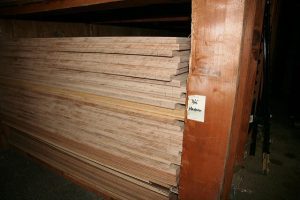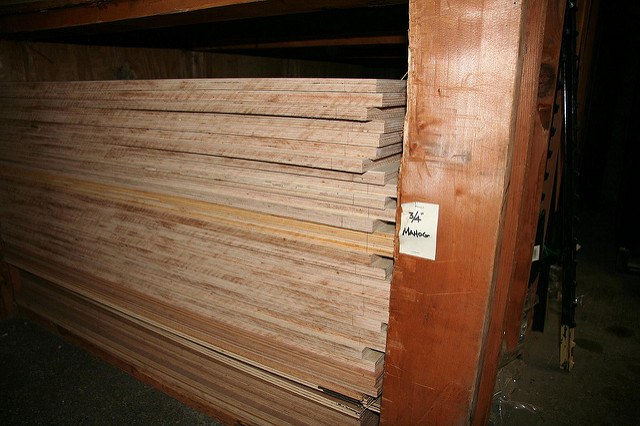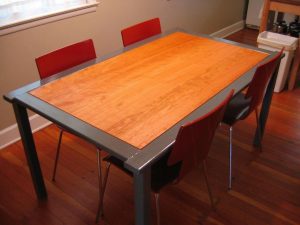Description: sapwood and heartwood
Purpose: marine
Color: yellowish-white, light brown, or yellowish
Wood Texture: medium to moderately coarse
The Grain: can vary from narrowly or widely interlocked
Manufacturing Process: incorporates a water-resistant glue
All the above makes it the perfect choice for projects coming in contact with water.
Sande Plywood vs. Birch
Birch plywood is another common plywood that people love to use, but note that its application and purposes are quite a bit different from sande plywood. For example, birch plywood has a fine grain that makes it ideal for projects where appearance matters. It is typically used for cabinetry, shelving, and furniture building. Furthermore could be an excellent plywood product to purchase and use if you’re building a chest or a dollhouse!
The problem with birch plywood is that it is not as resistant to the elements as the marine types of plywood. Have you ever left a piece of painted plywood out in the rain? When excess water comes into contact with painted plywood for a prolonged period. The glue bonds that hold the wood layers at gin to weaken to the point of failure. Sande plywood is the opposite: It is specifically designed to withstand exposure to water.
What is Sande Plywood Good For?
Sande plywood is typically used in marine applications. For example, it is commonly used in boat-building. Also constructed out of high-grade wood and is known for having many advantages over standard plywood.
The primary difference between this marine plywood and standard varieties found at most hardware and home improvement stores is that marine-grade plywood is designed to specifically hold up to water, whereas others sold there are not. Besides utilizing a binder or glue that is intended for submersion in water, marine-type plywood is typically made with twice as many layers as its nonmarine counterparts.
Marine plywood isn’t only used in boating applications. It is also used for many common indoor purposes, such as in the construction of bathrooms and kitchens. If you are thinking about renovating a bathroom, kitchen, or other room where paint, water, or moisture is likely to come in contact with the walls, then sande plywood might be the ideal choice.

3/4” plywood sheets
When to Use Sande Plywood
If you are working on a project that requires the use of plywood that can withstand the elements, you’ll want to use marine-grade plywood. Whether you are building a boat, revamping your kitchen, or remodeling your bathroom, you’ll want to try sande plywood.
Preparing for the Project
The outer layers of the panel and pieces cut out of sande plywood are typically made from tough, durable material. This helps it withstand strong impact damage. Moreover, it is typically used in projects where frequent exposure to wear and tear is expected. Projects utilizing this plywood have been known to last upwards of a decade. That means that you aren’t going to have to worry about replacing the same pieces of wood any time soon, which makes it beneficial.
Beautiful Finish
When you think of plywood, you likely think of something utilitarian rather than a product with an aesthetically pleasing finish. Many applications call for covering the plywood with some other material, such as flooring or siding. The plywood varieties that come with a great-looking finish are typically used for cabinetry or furniture – the finish isn’t made to withstand impact while keeping its handsome appearance. That is not the case with this kind of plywood.
This beautiful, smooth finish lasts even when exposed to harsh conditions. Sande plywood looks nice as-is, and it’s even better when painted or stained to match the needs of the project or to fit your aesthetic. Keep in mind that you’ll want to use a finish or stain that’s compatible with the conditions the finished project will be exposed to, as well.




